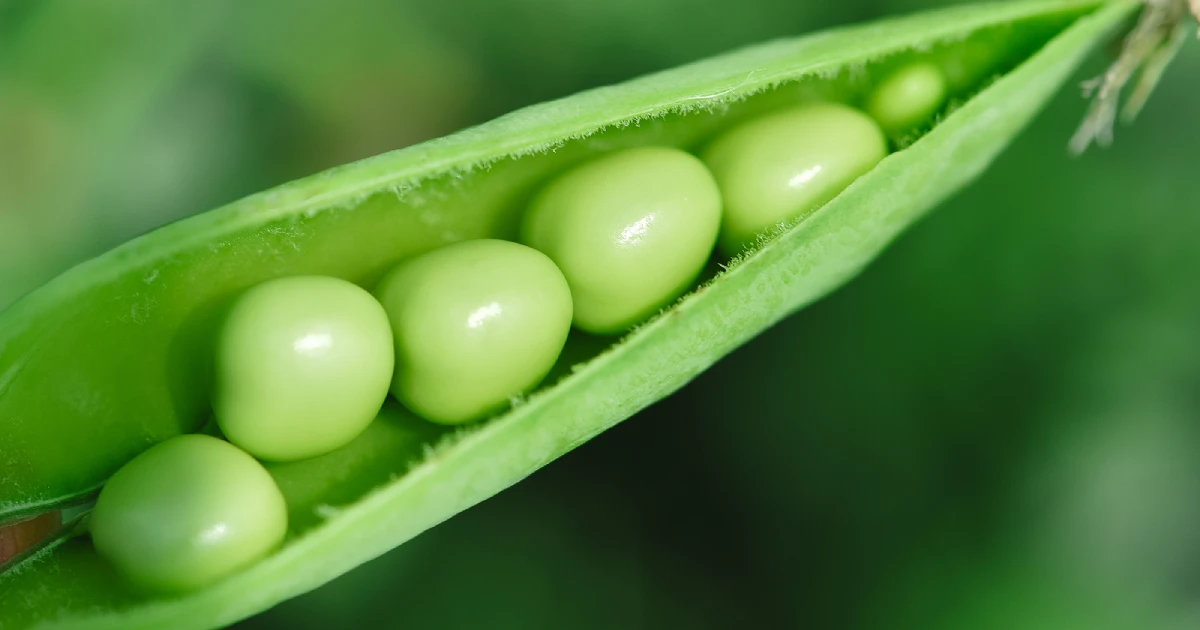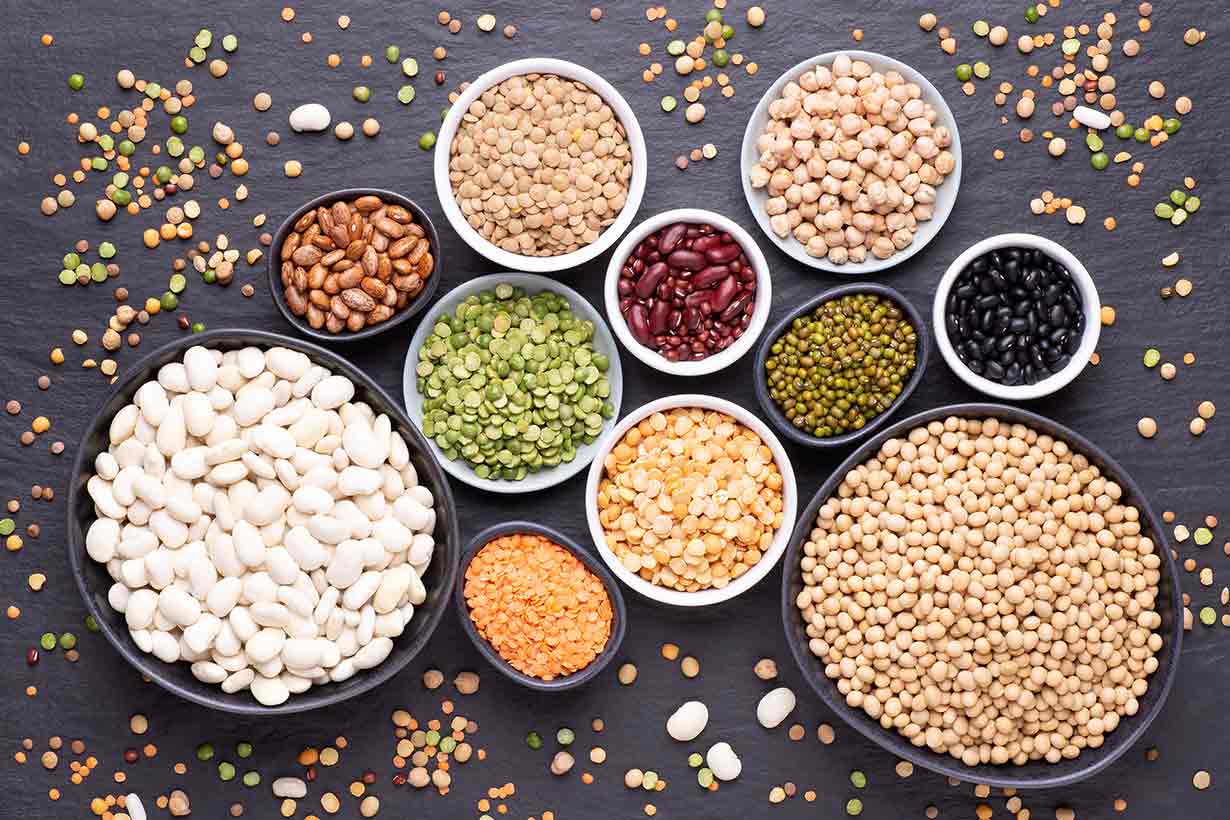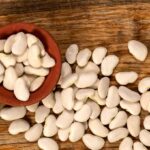Green garden peas are a staple food in many diets. Belonging to the legume family, they contain a wide range of essential nutrients and may offer several key health benefits.
This article provides an in-depth guide to the nutritional benefits of green peas and explores what the latest science says.
Green Peas In a Nutshell
- Nutrient-rich: Green peas provide a beneficial package of essential nutrients, offering high levels of fiber, protein, and several vitamins and minerals.
- May lower blood pressure: Findings from a recent study as well as their nutrient content suggests that green peas may have potential benefits for blood pressure.
- High in phytonutrients: Green peas contain 1.5 mg of gallic acid equivalent (GAE) polyphenols per gram.
- Allergen potential: However, green peas contain two allergens. Although rare, allergic reactions are possible.
Important Note: The content in this article is for informational and educational purposes only. It should not replace medical advice from your healthcare provider.
Table of contents
Peas May Help To Lower Blood Pressure

Green peas are a rich source of both fiber and potassium, both of which have been shown to lower blood pressure.
A 160g cup of cooked green peas provides 8.8 grams of dietary fiber and 434 mg of potassium, representing 31% and 9% of the daily value (% DV), respectively (1).
Here’s what recent research shows about fiber and potassium’s impact on blood pressure:
- A 2024 study published in Hypertension journal recommended that, according to the evidence reviewed, men with high blood pressure should consume a minimum of 38 grams of fiber per day and women should consume at least 28 grams per day (2).
- A 2022 umbrella review of meta-analyses of randomized controlled trials found that higher dietary fiber intake “significantly reduced systolic and diastolic blood pressure.” However, while there was a clear effect, the reductions were not large enough to have clinical importance (3).
- Alongside sodium and several other electrolytes, potassium plays a key role in blood pressure regulation. A 2025 dose-response meta-analysis of randomized controlled trials demonstrated that there is a dose-response reduction in blood pressure as potassium intake increases (4).
Furthermore, a 2018 randomized controlled trial involving 180 participants found that peas reduced systolic blood pressure compared to a control (rice) meal. In this study, participants consumed 120 grams of peas for five days per week over six weeks (5).
Since the existing research base in this area is limited, more research specific to peas and blood pressure is necessary. However, based on their nutritional content and a randomized controlled trial, green peas may have potential benefits for lowering blood pressure.
High in Fiber
As mentioned in the previous section, green peas are a rich source of dietary fiber, with 8.8 grams in a cup serving (1).
Fiber can have a wide range of health benefits, including but not limited to:
- Regulating blood glucose levels: Higher amounts of fiber in a meal reduce the spike in post-meal blood glucose. This may be advantageous for individuals managing their blood glucose levels (6, 7).
- Improving digestive health: Fiber can help to improve digestive health in several ways. It increases stool bulk, which can lower the risk of constipation. It can also feed beneficial bacteria living in the intestinal tract and bind and help eliminate toxins, including carcinogens (8, 9, 10).
- May promote heart health: Soluble fiber can help to lower LDL (low-density lipoprotein) cholesterol levels, sometimes referred to as “bad cholesterol” (11). Also, diets higher in fiber are strongly linked to a lower risk of cardiovascular disease (12, 13).
Research shows that the fiber in peas is approximately 17–26% soluble fiber and 75–83% insoluble fiber (14).
Based on research into fiber’s effects, the soluble fiber content holds potential benefits for heart health, whereas the insoluble fiber may contribute to improved digestive health.
Unfortunately, there are currently no studies specific to fresh, green peas. However, a 2023 systematic review and dose-response meta-analysis found that a higher legume intake is associated with a lower risk of cardiovascular disease and coronary heart disease (15).
A Good Source of Protein
While green peas don’t contain as much protein as foods like meat, mature (dried) legumes, seafood, and tofu, they do offer a good source of protein.
Each 160g cup serving of green peas provides 8.6 grams of protein, which can provide a good contribution to the protein content of a meal (1).
This is a significant amount of protein for a food typically used as a vegetable, and the protein content is high quality.
Specifically, green peas are a rich source of lysine, which is a rate-limiting amino acid in most vegetables (16). The production of proteins in the body stalls when an amino acid (usually lysine in vegetables) is in short supply, so peas being a good source of lysine adds to their protein quality.
Peas Have a Low Glycemic Index
According to data published in the 2008 International tables of glycemic index, green peas have a glycemic index of 51–54 (17).
Foods with a GI of 55 or less are considered to have a low glycemic index (18).
In practical terms, this means that green peas have a relatively low impact on blood glucose levels, and consuming them shouldn’t rapidly spike blood sugars.
However, as always, individuals managing their blood glucose levels should discuss any dietary changes with their healthcare provider.
Peas Are a Rich Source of Phytonutrients
Phytonutrients are chemical compounds found in plants that may have beneficial health effects (19). Some of the most well-known of these compounds include carotenoids and the different classes of polyphenols.
We can find the following phytonutrients in green garden peas (20, 21):
- Flavonoid polyphenols: Including flavonols, flavones, isoflavones, flavanones, flavanols, phenolic acids, and anthocyanins
- Phenolic acids: Including gallic acid, vanillin, and syringic acid
- Carotenoids: Including beta-carotene and zeaxanthin
Green peas are a good source of polyphenols, with a total content equivalent to 1.53 mg of gallic acid equivalents (GAE) per gram (21).
Potential Drawbacks
Although they are a nutrient-rich choice, like many foods, green peas have some potential, context-dependent drawbacks. In this case, the major drawback is the possibility for allergies.
Pea Allergies
Firstly, peas are not among the “big 9” allergens (which includes crustacean shellfish, eggs, fish, milk, peanuts, sesame, soybeans, tree nuts, and wheat) (22). This means that they are not among the most common foods capable of causing allergic reactions.
However, all legumes, including peas, have allergenic potential (23).
Green peas contain two main allergens called Pisum sativum 1 and Pisum sativum 2—also known as vicilin and convivilin—and there have been several documented cases of allergic reactions to peas (24, 25, 26).
Anyone who suspects they may have an allergy to green peas should consult their healthcare provider.
The Nutritional Profile of Green Peas
Now that we’ve explored the potential benefits and drawbacks of green peas, let’s assess their total nutritional content.
The tables below show the full nutritional values for cooked green peas per 100g and per 160-gram serving, with data sourced from the USDA’s FoodData Central (1).
| Nutrient | Per 100g | Per 160g cup |
|---|---|---|
| Calories | 84 kcal | 134 kcal |
| Carbohydrates | 15.6g (6% DV) | 25.0g (9% DV) |
| Fiber | 5.5g (20% DV) | 8.8g (31% DV) |
| Sugars | 5.93g | 9.49g |
| Fat | 0.22g (<1% DV) | 0.35g (<1% DV) |
| Saturated fat | 0.04g (<1% DV) | 0.06g (<1% DV) |
| Monounsaturated fat | 0.02g | 0.03g |
| Polyunsaturated fat | 0.10g | 0.16g |
| Omega-3 | 0.02g | 0.03g |
| Omega-6 | 0.08g | 0.13g |
| Protein | 5.36g (11% DV) | 8.58g (17% DV) |
| Cholesterol | 0 mg (0% DV) | 0 mg (0% DV) |
Vitamins
| Vitamin | Per 100g | Per 160g cup |
|---|---|---|
| Vitamin A (RAE) | 40 mcg (4% DV) | 64 mcg (7% DV) |
| Vitamin C | 14.2 mg (16% DV) | 22.7 mg (25% DV) |
| Vitamin D | 0 mcg (0% DV) | 0 mcg (0% DV) |
| Vitamin E | 0.14 mg (1% DV) | 0.22 mg (1% DV) |
| Vitamin K | 25.9 mcg (22% DV) | 41.4 mcg (35% DV) |
| Thiamin (B1) | 0.26 mg (22% DV) | 0.41 mg (34% DV) |
| Riboflavin (B2) | 0.15 mg (12% DV) | 0.24 mg (18% DV) |
| Niacin (B3) | 2.02 mg (13% DV) | 3.23 mg (20% DV) |
| Pantothenic acid (B5) | 0.15 mg (3% DV) | 0.25 mg (5% DV) |
| Vitamin B6 | 0.22 mg (13% DV) | 0.35 mg (21% DV) |
| Folate (B9) | 63 mcg (16% DV) | 101 mcg (25% DV) |
| Vitamin B12 | 0 mcg (0% DV) | 0 mcg (0% DV) |
| Choline | 29.7 mg (5% DV) | 47.5 mg (9% DV) |
A 160g cup of green peas provides high amounts of thiamin, niacin, vitamin B6, folate, and vitamins C and K.
Minerals
| Mineral | Per 100g | Per 160g cup |
|---|---|---|
| Calcium | 27 mg (2% DV) | 43.2 mg (3% DV) |
| Iron | 1.54 mg (9% DV) | 2.46 mg (14% DV) |
| Magnesium | 39 mg (9% DV) | 62.4 mg (15% DV) |
| Phosphorus | 117 mg (9% DV) | 187 mg (15% DV) |
| Potassium | 271 mg (6% DV) | 434 mg (9% DV) |
| Sodium | 3 mg (<1% DV) | 4.8 mg (<1% DV) |
| Zinc | 1.19 mg (11% DV) | 1.9 mg (17% DV) |
| Copper | 0.17 mg (19% DV) | 0.28 mg (31% DV) |
| Manganese | 0.53 mg (23% DV) | 0.84 mg (37% DV) |
| Selenium | 1.9 mcg (3% DV) | 3.04 mcg (6% DV) |
A 160g cup of cooked green peas is high in copper and manganese. It also provides more than 10% of the daily value for iron, magnesium, phosphorus, and zinc.
Why Green Peas Are a Healthy Choice
It’s not one single thing that makes green peas a beneficial dietary choice—it’s the whole package they provide.
As well as being a good source of fiber, green peas offer a moderate amount of protein, and high levels of numerous essential vitamins and minerals. Among their essential nutrient content, green peas are particularly high in thiamin, folate, vitamins C and K, copper, and manganese.
Due to the specific nutrients they contain, green peas may also have potential benefits for blood pressure and overall heart health.
Finally, green peas are relatively cheap and easy to cook, making them a convenient way to add beneficial nutrients to your diet.








